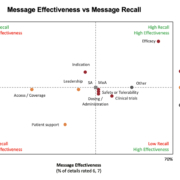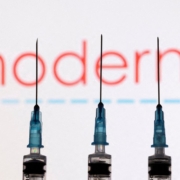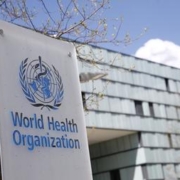From crisis to cure: unraveling the cancer drug shortage and the FDA’s role
From crisis to cure: unraveling the cancer drug shortage and the FDA’s role
Published: Jul 26, 2023
By Lisa Munger
BioSpace
Last Tuesday, the House Committee on Energy and Commerce asked the FDA to address concerns regarding inspections of foreign pharmaceutical manufacturing plants, predominantly in China and India. It was failed inspections at one particular Indian plant run by Intas Pharmaceuticals that led to the current shortage of cancer drugs still gripping the nation.
In particular, oncologists are deeply concerned about the limited alternatives to two critical chemotherapy drugs, which are not as effective in treating certain types of cancer and can even be more toxic, as reported by multiple outlets. This scarcity of backup therapies poses particularly troubling prospects for patients with ovarian, testicular, breast, lung and head and neck cancers, according to a report by MediaPost. Those battling these cancers are being forced to confront treatment delays and the possibility of bleaker futures.
There are no signs indicating that the shortage will abate anytime soon. The Intas plant in Gujarat, India, a major producer of these popular drugs, ceased operations late last year after being cited by the FDA for 11 specific violations. Analysts now project that the shortage may persist through the fall and possibly longer.
To get to the bottom of the current shortage and prevent similar issues in the future, Congress is imploring the FDA for answers. Specifically, the House committee has launched an inquiry into the FDA’s foreign drug inspection program, as it suspects that the U.S. is relying too heavily on foreign manufacturers, which frequently breach FDA safety regulations.
Shortcomings of the Current Manufacturing Supply Chain
Albert Friesen, CEO and founder of Medicure, a company focused on the development and commercialization of therapeutics for the U.S. market, told BioSpace that the nature of the American system and its preference toward a free market approach over managing the marketplace creates inherent challenges in drug pricing and shortages.
He said that in the existing system, generic manufacturers enter the market as soon as they can, sometimes kickstarting a price-competitive bidding war.
“The low prices drive many out of the business, and eventually, one or a few remain. This creates a supply risk, and, in some cases, the lone remaining manufacturer substantially increases prices.”
Indeed, half of the supply of the two chemotherapy drugs most affected by the current shortage, cisplatin and carboplatin, were produced at the Intas plant that was shut down late last year, Erin Fox of the American Society of Health-System Pharmacists (ASHP) told BioSpace. “That company was somehow able to get 50% of the market share in the U.S.”
She added that no one was aware that Intas had such a large share of the market until production ceased. That’s because “market shares are generally pretty proprietary [to the FDA],” she told BioSpace.
She said when purchasers look at options for drugs, they may see “four or five suppliers with equivalent prices. And so it gives you a false sense of security,” even though the whole supply chain could collapse if the primary production facility is shut down.
The problem is not a new one, Fox said, noting that she began tracking drug shortages in 2001 after noting a “gap in the information that FDA was providing about shortages.”
Another problem with the U.S. pharmaceutical production process, she said, is that generic drugs are either approved or not, not scored by quality or the potential for quality control issues. This means generics compete on price alone.
“The companies undercut each other and the temptation is to cut corners on quality,” Fox said.
Indeed, the recent shortages stem largely from quality control issues at Intas after a surprise inspection by the FDA at their plant. The inspection report exposed serious lapses in quality control, describing a “cascade of failure” at the site.
The FDA did not respond to BioSpace’s inquiries for comment as of this publication.
Building a Robust and Reliable Network
To mitigate the gaps in the U.S. supply, doctors are employing various strategies. Some are extending the intervals between treatment sessions and reducing doses to stretch the available quantities. Others are adopting a “surgery first, chemotherapy later” approach, hoping that the drug supplies will be replenished.
Meanwhile, to alleviate the shortage, the FDA has taken some measures, including overseeing the release of batches of the drugs from Intas and allowing the temporary importation of drugs from Qilu Pharmaceuticals in China. However, the supply remains limited, and more data are needed to determine the effectiveness of these imports.
Friesen said more manufacturers are always good for the supply chain, but there isn’t much profit motive to produce generic drugs.
“Drug manufacturers need to make money, and with tight margins, we see many companies drop off the market soon after generic competition is saturated,” he said. “Keep in mind that manufacturing medications is expensive, and failure to move product can cost companies millions, so companies are not willing to produce more than the demand.”
He added that it’s not just the final product that needs to be considered but the component parts as well and that diversifying the sources of these ingredients is also critical.
“While many companies may manufacture a generic medication, the original components of the medication may come from only one source. This is a huge risk to the supply chain”
In the face of such continued issues, the House committee is looking for longer-term solutions. In a letter to FDA Commissioner Robert Califf, committee members emphasized that the majority of FDA Warning Letters are directed at Chinese and Indian manufacturers and argued for stringent foreign inspections.
Source: BioSpace









